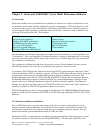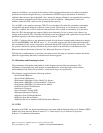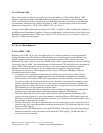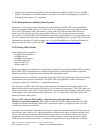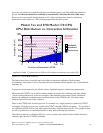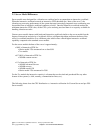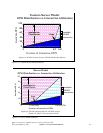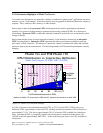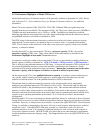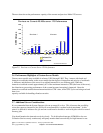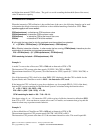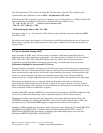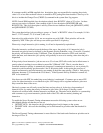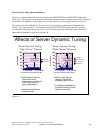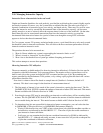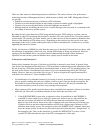
2.5 Performance Highlights of Model 170 Servers
iSeries Dedicated Server for Domino models will be generally available on September 24, 1999. Please
refer to Section 2.13, iSeries Dedicated Server for Domino Performance Behavior, for additional
information.
Model 170 servers (features 2289, 2290, 2291, 2292, 2385, 2386 and 2388) are significantly more
powerful than the previous Model 170s announced in Feb. '98. They have a faster processor (262MHz vs.
125MHz) and more main memory (up to 3.5GB vs. 1.0GB). In addition, the interactive workload
balancing algorithm has been improved to provide a linear relationship between the client/server (batch)
and published interactive workloads as measured by CPW.
The CPW rating for the maximum client/server workload now reflects the relative processor capacity
rather than the "system capacity" and therefore there is no need to state a "constrained performance"
CPW. This is because some workloads will be able to run at processor capacity if they are not DASD,
memory, or otherwise limited.
Just like the model 7xx, the current model 170s have a processor capacity (CPW) value and an
interactive capacity (CPW) value. These values behave in the same manner as described in the
Performance highlights of new model 7xx servers section.
As interactive workload is added to the current model 170 servers, the remaining available client/server
(batch) capacity available is calculated as: CPW (C/S batch) = CPW(processor) - CPW(interactive)
This is valid up to the published interactive CPW rating. As long as the interactive CPW workload does
not exceed the published interactive value, then interactive performance and client/server (batch)
workloads will be both be optimized for best performance. Bottom line, customers can use the entire
interactive capacity with no impacts to client/server (batch) workload response times.
On the current model 170s, if the published interactive capacity is exceeded, system overhead grows
very quickly, and the client/server (batch) capacity is quickly reduced and becomes zero once the
interactive workload reaches 7/6 of the published interactive CPW for that model.
The absolute limit for dedicated interactive capacity on the current models can be computed by
multiplying the published interactive CPW rating by a factor of 7/6. The absolute limit for dedicated
client/server (batch) is the published processor capacity value. This assumes that sufficient disk and
memory as well as other system resources are available to fit the needs of the customer's programs, etc.
Customer workloads that would require more than 10 disk arms for optimum performance should not be
expected to give optimum performance on the model 170, as 10 disk access arms is the maximum
configuration.
When the model 170 servers are running less than the published interactive workload, no Server Dynamic
Tuning (SDT) is necessary to achieve balanced performance between interactive and client/server (batch)
workloads. However, as with previous server models, a system value (QDYNPTYADJ - Server Dynamic
Tuning ) is available to determine how the server will react to work requests when interactive workload
exceeds the "knee". If the QDYNPTYADJ value is turned on, client/server work is favored over
additional interactive work. If it is turned off, additional interactive work is allowed at the expense of
low-priority client/server work. QDYNPTYADJ only affects the server when interactive requirements
exceed the published interactive capacity rating. The shipped default value is for QDYNPTYADJ to be
turned on.
IBM i 6.1 Performance Capabilities Reference - January/April/October 2008
© Copyright IBM Corp. 2008 Chapter 2 - Server Performance Behavior 23



